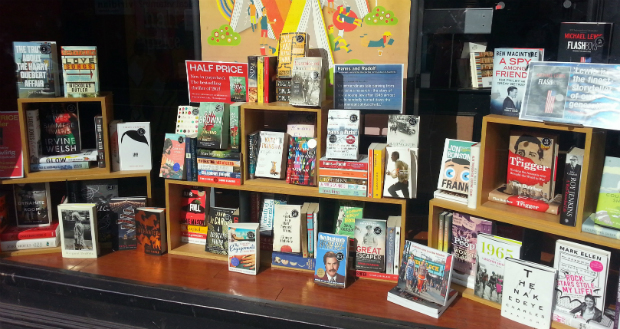
Publishers will no longer take gambles on producing best sellers: they will migrate to on-demand printing to eliminate the risk that comes with ordering a print run.
Books will be printed as orders arrive and shipped to the customer’s door. Digital file storage will ensure that books will not go out of print and that titles will be readily available whenever requested.
Electronic books will eventually have an impact on the trade and mass-market book industry. The high cost of the e-book appliance makes it more economical to buy trade and mass-market books in their printed form. Right now, the consumer pays first for the appliance and then for each subsequent title. The price for the appliance will come down in time, but only as more consumers purchase it.
Paperbacks are portable and cheap. E-readers will only challenge paperbacks when they are robust enough to survive accidental dunkings in the bathtub or exposure to salt water and sand. The paperback industry will change. At first, popular authors with best-selling titles will be printed in long runs to satisfy anticipated demands and to take advantage of economies of scale. As sales begin to decline, replacement runs will be shorter than the current norm to avoid the expense and liability of warehousing. Paperback publishers will find a balance between just-in-time production for the debut of high-demand titles and warehousing to ensure steady follow-up delivery between runs.
As a title’s popularity wanes, short runs will be supplanted with on-demand printing. Eventually, it will become more economical to manufacture books for low-volume sales using on-demand technology than it is to warehouse and inventory the entire projected demand cycle of a title.
Simple searching
Reference books will change. The past few years have seen the decline of printed encyclopedias because search engines in software and online editions make research faster and easier.
Only 6% of the encyclopedia pages in print in 1980 remained in print in 2000. But there is one obstacle to public acceptance of the web as a reference tool – credibility. The web is dynamic, so consumers are suspicious that sources are not as secure as print.
The life span, cost of production and way technical books are used will make their publishing process different from other books. Publishing technical books is expensive, as is updating technical material. Software manuals need to be updated as new versions are released. Old versions of these books are virtually useless, representing a loss for publishers.
Technical books have an almost endless repeat business because consumers have no choice but to buy new editions. The advantages of electronic versions is that they can include audio, video and links to related websites for additional advice. As computers become lighter, cheaper, more powerful and more portable, they could represent a serious challenge to traditionally printed technical materials. Sales for children’s books have grown 34% from 1990 to 2005. Electronic media both compete with children’s books and provide marketing tie-ins for juvenile literature. CD-ROM book packages provide interactivity and extras such as sound and animation. While these may encourage young children to read, purists argue that multimedia deprives children of the pleasure of imagination.
Yearbooks will be produced on demand. This will open the market up to smaller, digital printers. Schools are starting to move toward alternative forms of memorabilia such as CD-ROMs, websites and video yearbooks. This will reduce the number of printed copies of yearbooks, but new media will not replace printed yearbooks. Rapidly changing file formats could hinder acceptance of non-printed yearbooks – consumers may be unwilling to invest in memories that won’t be accessible in the future.
Textbooks are the largest segment of the book publishing market, comprising about 25% of total book sales. Textbooks that deal with rapidly changing subjects such as computers have to be updated more frequently than books that deal with slowly changing subjects such as maths. Digital media can be updated and reissued quickly, keeping information up to date. Over time, this material will probably be maintained electronically and updated in real time. For example, at one university the curriculum is being recorded onto a single DVD – textbooks, manuals and lecture slides. Each semester, students will trade the old DVD for an updated version. These will replace more than two million pages, thousands of images and more than 181.5kg of books and manuals.
Changing run lengths
Long-run book printing will remain a web offset process, but sheetfed offset will be used for moderate runs. The development of digital printing has given publishers more options in textbook publishing. One of these is on-demand printing.
The current growth rate of on-demand textbook publishing is about 15-20% per year, compared with about 5% for traditional textbook publishing. Custom on-demand publishing is used to create packets of materials for specific classes, lab sections or even individual students.
Photo/memory books are printed in very short runs. The importance of these publications is evident in their long life span – people tend to save memory books for decades.
New media formats have provided new opportunities to record these memories. Videotape was the first competitor in this market. It will be interesting to see whether the tapes remain readable over time, and whether there will be tape players to play them in 20 years. Electronic media offer many new options for recording, organising and distributing memorials in a way that can mimic books. But the printed book’s prestige will increase, and printed memory books will be in demand. On-demand printing will allow the creation of personalised memory books. Digital cameras, desktop printers and software with templates will allow consumers to create and print their own memory books.
Frank Romano is Professor Emeritus at the Rochester Institute of Technology in the USA. He is a regular contributor to ProPrint.
Comment below to have your say on this story.
If you have a news story or tip-off, get in touch at editorial@sprinter.com.au.
Sign up to the Sprinter newsletter



